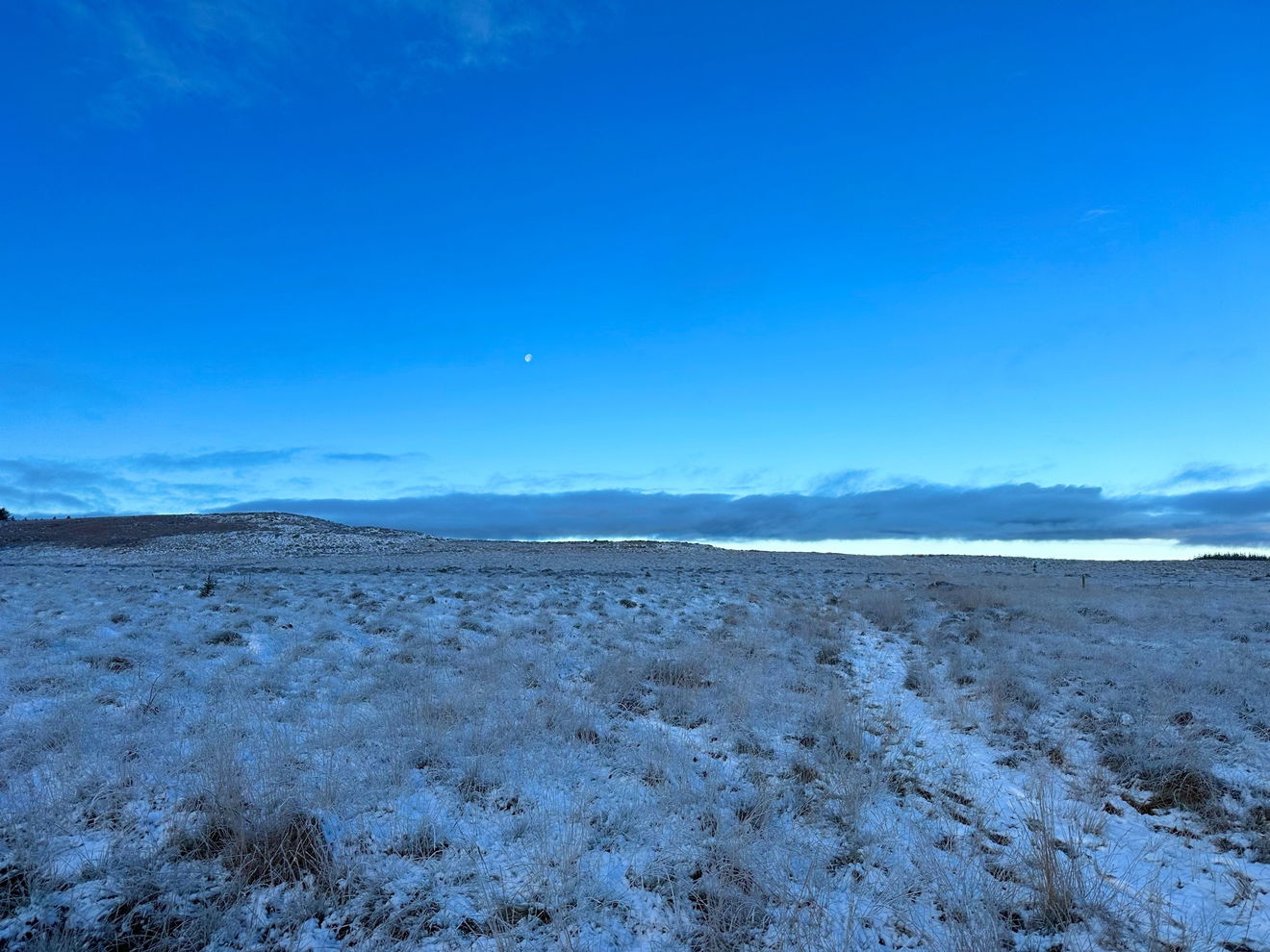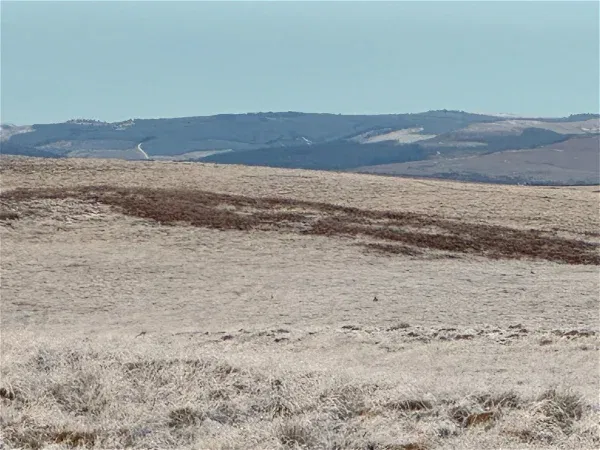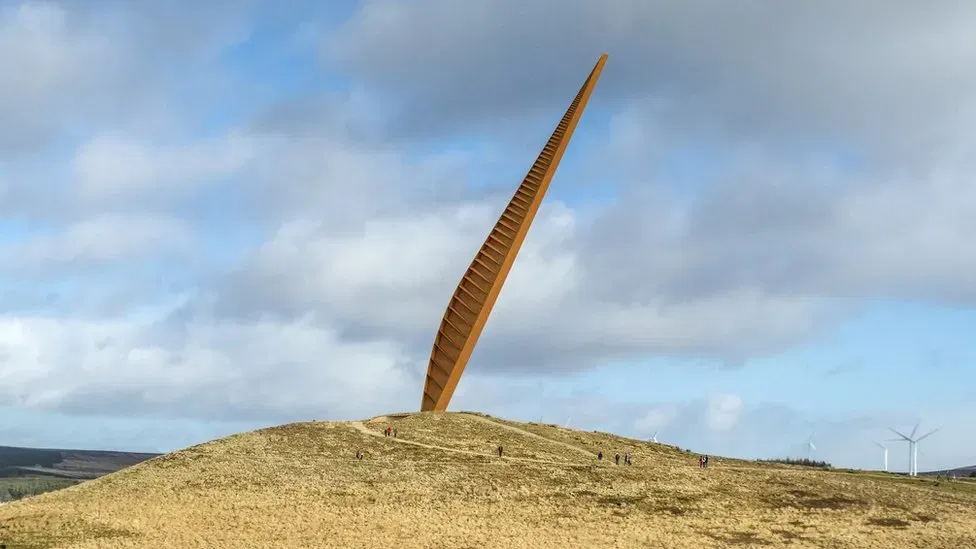In The Wilds Of Wanney!

Welcome to the bleak, cold, wilderness approach to the Great Wanney Crag.
We used to take my mother-in-law out with us on rural rides in our pickup on a Sunday, right off the beaten track. We loved it. I'm not sure she ever liked it! Offroading on the moors between Langholm and Newcastleton, she once asked “Eeeeeeee, where d'you think everyone is?”
Riding over the Otterburn Ranges she'd note“Wey, there isn't a soul in sight?” At Ingram she exclaimed “Mind, we're right out in the sticks here pet, right in the wilds of Wanney”. I never really knew what this meant. I thought it was just a Grandma thing, like she'd say ”I'll see you on the fly paper” when we left her Heaton home. I never knew what that meant either!

We sometimes walk the dogs at Sweethope Loughs. Swinging a right off the A68, the moor road towards Knowesgate affords beautiful views eastwards. Just our kind of road with plenty of sheep and no people! On one of the snowy Saturdays earlier in the winter, we took a trek to the actual Wilds of Wanney. Grandma is long gone, but I'd so love to tell her we found them...those Wilds of Wanney!


Fourlaws is a chunk of coniferous forest east of Kielder, overlooking Chesterhope Common. It's an SNCI, a Site of National Conservation Interest, and home to a healthy bunch of blanket bog. The crags provide ledges for raptors and the moor offers nesting sites for spring waders, larks and red-legged partridge.
. The area is known locally as 'The Wanneys' due to the location of the Great Wanney Crag, Little Wanney Crag and the Wanney Beck. The source of the River Wansbeck stirs and starts here above Sweethope, and flows through to Ashington before its scenic route spills into the sea at Newbiggin.
Great Wanney Crag (in the wilds of Wanney) can be accessed from several approaches. We tried two. We started at a small snickety gate opposite Sweethope Loughs and headed up the moor. It was very wet underfoot and we had to navigate large patches of ice.
The dogs and their four legs made light work of it. Once we reached the top, we swung a left keeping close to the stone wall towards Fourlaws, but the fallen trees made it impassable. We backtracked and tried to glide/slide/stride (all of these approaches were adopted), over the icy pond that had formed around the gate and headed out on to the moor ahead.


The views over Chesterhope Common in the snow were perfect. Worth the climb in the cold. A Scheduled Ancient Monument, a Pre Roman Iron Aged Hill Fort on Wanney Crag borders the forest, but wasn't visible in the white stuff!
I was, however, appreciative of Steve's size 12 footprints in the snow, and was telling him so when he disappeared into a bog. Seeing him knee-high in icy water, I made a hasty retreat! We backtracked back to the car because the ground was so sodden and we couldn't clearly see a way ahead. We should have heeded the what3words address prior to the ascent ///remarried.ending.defeat!
Back in the car, we drove to the other side of the crag. This is a great place to view the expanse of the sandstone crag which looms to 20 meters in places and became a popular climbing spot in 1902 when G.W Young recorded the first routes all of which have names in order of challenge - Thunder Thighs, Idiot Wind and Absent Friend to name but a few. The crag is said to be one of the most spectacular crags in all of Northumberland. The highest we got was travel mug to mouth!


In this untouched landscape, controversially, in 2019, plans were unveiled to build a huge monument to celebrate the Queen and Commonwealth directly in front of the uninterrupted views Great Wanney Crag. Designed by artist Simon Hitchens, the 55ft meter steel spire pointing at the sun would be three times larger than The Angel of The North. 'Ascendant' as the sculpture is called is supposed to represent a slice of the hillside and would include a walking trail and parking, but locals have formed a campaign group to protest against the piece which they believe would be 'ecological vandalism', whilst Lord Davenport, baking the scheme says it will be 'the most prominent landmark in the Border region'

In 1876 Northumbrian poet James Armstrong is thought to have immortalised not only the unending views of Ridsdale but the term 'The Wilds of Wanney' in the first song in the book 'Wanny Blossoms'.
"O Wannys, wild Wannys! the scene it is grand,
On, a clear summer's morn on thy summit to stand,
The hills o' the Carter and Cheviot to view,
An' listen the lapwing an' lonely curlew.
The shepherd he climbs thee his fair flocks to see,
An' to woo that fair mountain nymph-sweet Liberty;
On the braes by the burnie the lambs loup and play,
Round the wild hills o' Wannys sae far, far away."
Living at Aid Crag, Armstrong was always in the Wilds of Wanney. He dedicated this song for the Northumbrian Pipes to his brother “Sincerely dedicated to my affectionate Brother John Armstrong, in commemoration of our varied Wanderings together on the Hills and by the Streams of our native land.
And the Wilds of Wanney this was and is, and not a soul was to be seen! I wonder want Jim would have made of the proposed sculpture?


No sight of lapwings or curlew on these them there moors in the snow, or any interruptions to the skyline from Ridsdale to the borders, but we were chased from the crag by a beady-eyed buzzard in a tank top knitted by his nanna who was eyeing up dog and chips for lunch!
